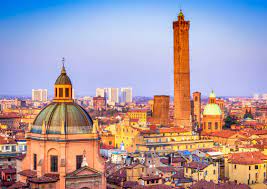Relocating to Italy? A guide for securing work permit, residency

Rome: Italy is one of the most fascinating places to live and work owing to serene environment, a touch of history and amazing food besides quality of lifestyle it offers to the citizens.
In order to relocate to the European country and work there, one needs to have a work visa of Italy. Let’s explore how one can secure the Italian work permit and create a better life.
Italy Work Visa: You can enter Italy legally and work there on the basis of a residency permit for employment-related reasons. There are various licenses available that allow aspirants to work in the ocuntry legally.

Italy Visas and Permit – Types: As per the Italian law in place, non-EU nationals may legally enter and operate in Italy with the following permits:
Permission to stay for independent work: This is for those individuals who are self–employed and do not work for an organization.
Permission to stay for salaried employment: For those who are employed by a firm (including domestic workers and seasonal occupations), a residence permit for subordinate labor is needed to work in the country.
Decreto Flussi or Entry Quota: One of the most important aspects of Italian visa is that Italy uses a quota system for most occupations, which means that a work visa can only be allowed if you meet all criteria and if the quota limit hasn’t been met yet.
The determination of annual quota is established by the government, which sets the quota through “Decreto Flussi”. The quotas change every year, your employer or immigration agency will be informed of quota limits and whether your profession is listed or not.
Requirements for Italy Visa and Permit: Before applying for a work visa, the applicant needs to have secured a job in Italy. The primary reason for this condition is that your employer needs to complete visa application on your behalf.
As far as the documents are required, the following ones are needed in order to file for an Italian work visa:
- A duplicate of the employment contract
- A duplicate of the initial Nulla Osta “permission to work” request
- Passport having at least two blank pages and still valid for a minimum of 3 months after the expiration of the visa
- Passport photographs
- A filled-out application for an Italian long-stay visa
- Residence agreement
- Diplomas and other attestation documents
- The documents needed to register for a residence permit include:
- Four passport-size photos
- A valid passport
- Documents pertaining to your stay in Italy, like a working visa or proof of enrolment in classes
- All the paperwork you provided while you applied for an Italian long-term visa back home
- Evidence of insurance coverage from a business permitted to do business in Italy.
Procedure: When any aspiring worker is given the opportunity to accept a job in Italy, the Nulla Osta (permission to work) application process can then begin.
The steps needed to obtain a work visa start from the employer who would request a work permit at the bureau of immigration in their particular Italian province. The employee would be provided with a copy of the work permit after it has been approved.
The employee will then print out the Italy Visa Application Form, fill it out, gather all required paperwork, and deliver the application in person to the Italian embassy or consulate.
It is to be mentioned that the worker will only have 6 months to secure the visa and travel to Italy when the application is approved by the Italian authorities.
The employee should request within eight days after arriving in Italy, a permesso di soggiorno, or residence permit at local Post Office. Based on the contract of employment, a work visa for Italy may be active for a period of two years; however, it may be prolonged for a maximum of five years.





